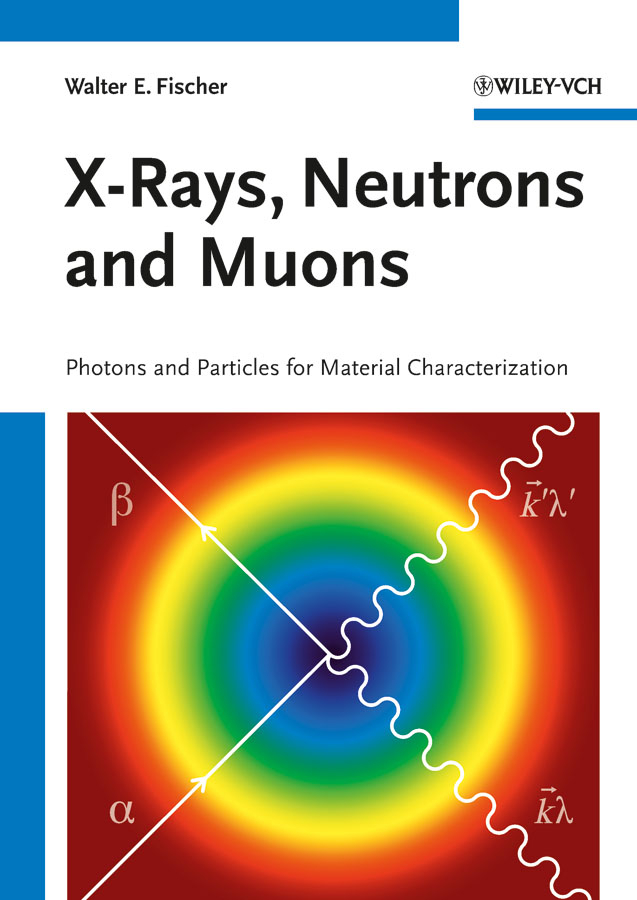
X-Rays, neutrons and muons: photons and particles for material characterization
Fischer, Walter E.
Morf, Rudolf
Aiming elementary particles at surfaces and observing the result in order to glean information on the material is an old discipline: spectroscopy using photons has been performed for more than a century. But recently, a number of much more exotic, subatomic particles such as neutrons, muons or x-rays have beengenerated in modern cyclotrons and synchrotrons, and due to the steadily growing availability of measurement capacitythey have become attractive as alternative ways of probing condensed matter in order to better understand its properties and to correlate material behaviour with its structure. In particular, the combined use of several different types of particles such as x-rays, neutrons and muons yields rich information. This book gives a practical account of how well they complement each other for 21st century materials characterization. INDICE: 1. INTRODUCTION Some Historical Remarks The Experimental Methods The Solid as a Many Body System Survey over the Spectral Region of a Solid 2. THE PROBES, THEIR ORIGIN AND PROPERTIES Origin: The Photon, the Electron, the Muon, the Neutron Properties: Electrons, Muons, Neutrons, Photons Magnetic Field of the Probing Particles 3. INTERACTION OF THE PROBES WITH THE CONSTITUENTS OF MATTER The Nuclear Interaction of Neutrons: Interaction with Free Nuclei, Bound Scattering Length, Spin and Isospin Considerations Interaction of X-Rays with Atomic Constituents: Interaction of a Point Charge with an Electromagnetic Field, Scattering of Light at Atomic Constituents, Photoemission Magnetic Interaction: Neutrons and Muons as Probes, X-Rays as Probes Corollar: Neutrons, X-rays, Magnetic Interaction 4. SCATTERING ON (BULK-)SAMPLES Introduction The Sample as a Thermodynamic System: Hamiltonian, Partitioning into Subsystems, Interaction of the Probe with the Subsystem The Scattering Experiment: Differential Cross-Section and the Dynamical Scattering Function, Coherent and Incoherent Scattering, Correlation Functions, Elastic and Inclusive Scattering, Inelastic Scattering Properties of the Scattering- and Correlation-Function: Mass- and Charge-Densities as Observables, Electronic Currents and Magnetization as Observables General Form of Spin-Dependent Cross Sections: Introduction, Neutrons, X-rays (non-resonant), Cross-Sections, Spectroscopy Summary and Conclusions 5. GENERAL THEORETICAL FRAMEWORK Time Development of the Density Operator: Scattering Function and Cross Section, Wangsness-Bloch Equations ? Relaxation Times (an Application for mu-SR) Generalized Suspectibility: Electromagnetic Field in a Medium, Green?s Function, Retarded Kernel ? Response Function, Fluctuation ? Dissipation, Kramers-Kronig Relations The Dielectric Response Function and Sum Rules: Sum Rule of Thomas-Reiche-Kuhn (TRK), Random Phase Approximation, Optical Sum Rules Appendix A: Principles of Scattering Theory Appendix B:Form Factors Appendix C: Reminder on Statistical Mechanics Appendix D: The Magnetic Matrix-Elements Appendix E: The Principle of a mu-SR-Experiment Appendix F: Reflection Symmetry and Time-Reversal Invariance Appendix G: Collective Excitations
- ISBN: 978-3-527-30774-6
- Editorial: Wiley-VCH
- Encuadernacion: Rústica
- Páginas: 250
- Fecha Publicación: 24/08/2011
- Nº Volúmenes: 1
- Idioma: Inglés
